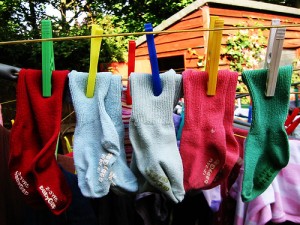Finding more lessons from TV (in this case, shows like 30 Rock and Girls), we’re seeing how women are investing more in careers and/or casual encounters than commitments to deep romantic relationships. At face value, this looks like a great example of women’s empowerment as our society comes to terms with the fact that—well—the Eurythmics and Aretha Franklin said it better than I can.
But as Leslie C. Bell writes in The Atlantic, this hesitance to pair off isn’t necessarily happening because young women are “masters of their own destiny.” Instead, the trend may be due to a new social norm that “ambitious young women in their 20s shouldn’t want relationships with men.”
Citing work from Laura Hamilton and Elizabeth Armstrong, who found that young women “believed relational commitments were supposed to take a backseat to self-development” (see their article, with Paula England, in Contexts magazine, Summer 2010), Bell argues that seemingly-progressive norms can cause undue stress when we assume individual interests are always in tension with social needs, and individual needs should always take priority.
Many young and aspiring women with whom I spoke felt as though it were counterproductive to their development to prioritize a relationship with a man.
Confused about freedom and desire, young women often split their social and psychological options—independence, strength, safety, control, and career versus connection, vulnerability, need, desire, and relationships—into mutually exclusive possibilities in life.
Bell’s point isn’t that women should go back to the old priorities either. Instead, they should recognize when it is healthy to balance a human need for social relationships with individual development. The sisters do it for themselves, but they shouldn’t always have to:
I would never advocate that women return to the stereotype of the single woman pining for romance… the successful woman who is in a relationship is not the same as the pining woman. She’s the one who is acknowledging the full range of her desires.









